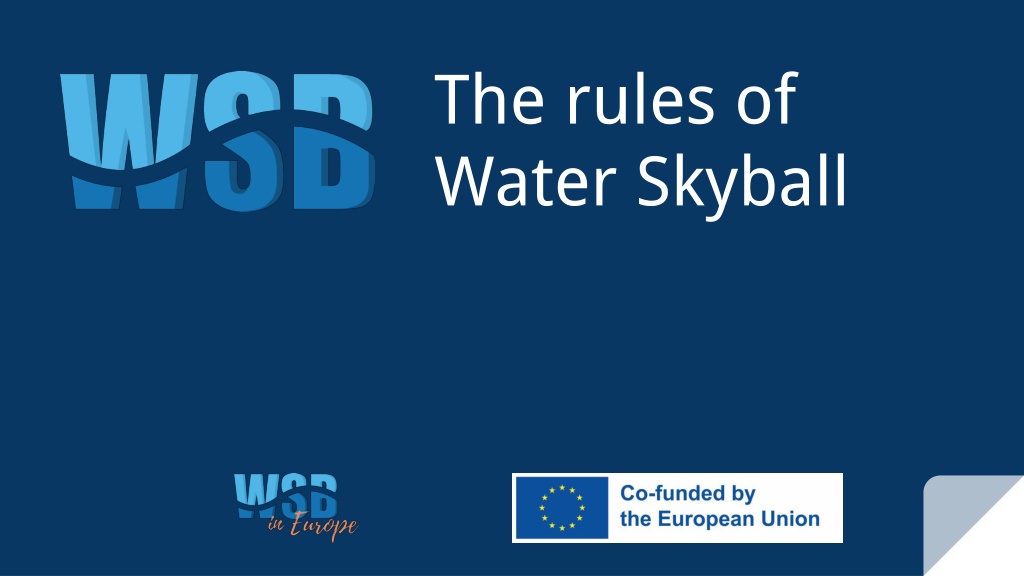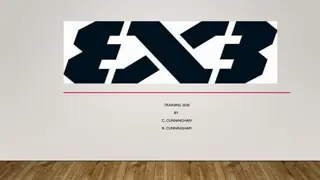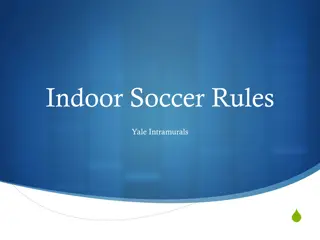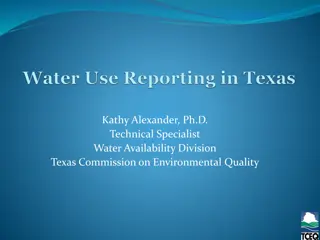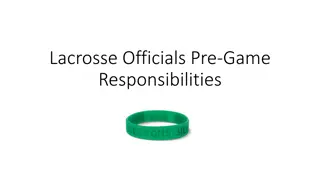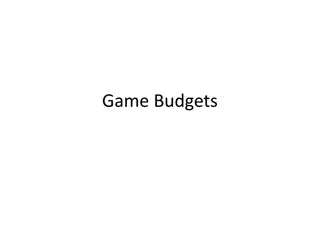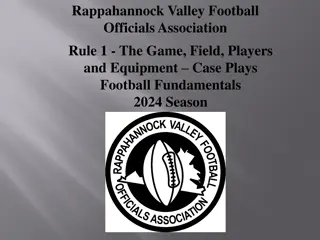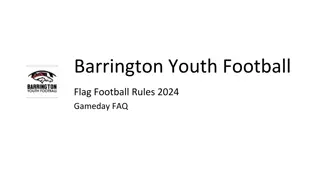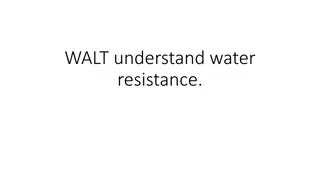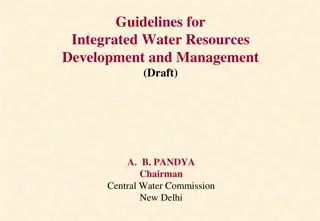The Rules of Water Skyball - A Comprehensive Guide to the Game
Discover the rules and guidelines for playing Water Skyball, a thrilling water-based sport involving strategic throws and player zones. Learn about scoring, player requirements, no-contact regulations, and field setup. Get ready to dive into the action-packed matches tomorrow armed with a complete understanding of the game.
Download Presentation

Please find below an Image/Link to download the presentation.
The content on the website is provided AS IS for your information and personal use only. It may not be sold, licensed, or shared on other websites without obtaining consent from the author. Download presentation by click this link. If you encounter any issues during the download, it is possible that the publisher has removed the file from their server.
E N D
Presentation Transcript
The rules of Water Skyball
Goal The goal of this session is to enable you to play the game and to make you understand all the matches tomorrow.
Requirements 10.5 - 11m Field Ball Goals 2x2 players min. 10 mins 3m 4.5 - 5m 3m 8m Water depth: 100-120cm Water temp: min. 20oC
Zones Defender zones only 1 player at a time, including the opponent Midfield zones any number of players The value of a goal depends on the zone of the throw 3m 4.5 - 5m 3m
The goal Scoring on the sides scores 1 points Scoring in the middle scores 2 points Scoring from your own defender zone doubles the points above A goal is scored if more than 50% of the ball passes the centerline of the goal line. After a starting whistle, the ball must be possessed by at least two players before crossing the goal line to count as a valid goal
Players 2 players per team no substitutes players must wear a cap no jewelry during the game
No contact Every physical contact (even the intent) is forbidden between the players Player s Area: Each player has an area of an arm's length radius. The other player must not reach or make a move into this area. The direction of movement of the area is determined by the head s line. Examples of contact: Walking, running, jumping into another player s area Standing still, and leaning into contact, instead of avoiding it Crossing another player s area when throwing the ball Tackling a free ball immediately after another player Being dangerous to ourselves
Players on the field At the start of a game 1-2-1 During the game no contact rule defending a territory by body, not by arms defending by two arms is forbidden occupied defender zone: the wall always finish a zone change playing in the opponent s defender zone Intercepting the ball by positioning (next slide)
Intercepting by positioning Interception always requires an action from the intercepting team! has the ball
Ball handling It s forbidden to grab the ball (except for the goalkeeper when defending) touch the ball with both hands in the midfield (including a block or catch) throw using both hands hit the ball (either with a fist or palm, except for the goalkeeper) It s a valid move to throw with a single hand throw holding the ball on the palm
Starting a game Players positions (1-2-1 line up) The 4 ways to start a game (throw out) goalkeepers are in their defender zones midfielders are on their half no player is allowed to cross the center of the field before the game starts no goal can be scored from throw-out 1. the goalkeeper throws the ball to himself, 2. the ball hits the water surface, 3. the ball leaves the defender zone, 4. the goalkeeper exits the defender zone with a ball in his hand.
Scoring a goal A goal can only be scored with a hand-launched shot 1 2 2 4
Penalty Taking away the ball 1 penalty 2 penalties 3 penalties Penalty must be taken at first intention The team that threw the penalty continues with a throw-out
The ball leaves the field When the ball leaves the field, the game continues with a throw out if the ball leaves the field of play on the sides, the opposing team is the next with a throw-out, if the ball leaves the field from one of the attacking team's players at the opponent's baseline (including the situation of a goal), the defending team may bring the ball back into play by a throw-out, if the ball leaves the field from the defensive team's goalkeeper through the baseline, it is the defending team s turn to restart with a throw-out, if the ball leaves the field from the defensive team's midfield player through the baseline, except for the goal line, it is the defending team s turn to restart with a throw-out.
A goal is worth either 1, 2, or 4 points Always avoid physical contact Never squeeze the ball in the mid field Use single hand only when handling the ball in the mid field Learn how to intercept by positioning yourself More rule discussion with examples comes in the next session Summary Part 1: Getting started with WSB
